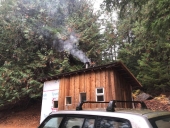




My alter ego who has a potty-mouth wrote a book. Check it out here: https://www.amazon.com/Adulting-101-your-straight-succeed/dp/1732148503/ref=sr_1_5?crid=3FBIUWQCJQAPM&keywords=adulting+101&qid=1675194062&sprefix=adulting+101%2Caps%2C96&sr=8-5
 1
1




Moderator, Treatment Free Beekeepers group on Facebook.
https://www.facebook.com/groups/treatmentfreebeekeepers/






 2
2




For all your Montana Masonry Heater parts (also known as) Rocket Mass heater parts.
Visit me at
dragontechrmh.com Once you go brick you will never go back!
 2
2




My alter ego who has a potty-mouth wrote a book. Check it out here: https://www.amazon.com/Adulting-101-your-straight-succeed/dp/1732148503/ref=sr_1_5?crid=3FBIUWQCJQAPM&keywords=adulting+101&qid=1675194062&sprefix=adulting+101%2Caps%2C96&sr=8-5




 1
1




For all your Montana Masonry Heater parts (also known as) Rocket Mass heater parts.
Visit me at
dragontechrmh.com Once you go brick you will never go back!




My alter ego who has a potty-mouth wrote a book. Check it out here: https://www.amazon.com/Adulting-101-your-straight-succeed/dp/1732148503/ref=sr_1_5?crid=3FBIUWQCJQAPM&keywords=adulting+101&qid=1675194062&sprefix=adulting+101%2Caps%2C96&sr=8-5




 3
3




For all your Montana Masonry Heater parts (also known as) Rocket Mass heater parts.
Visit me at
dragontechrmh.com Once you go brick you will never go back!








For all your Montana Masonry Heater parts (also known as) Rocket Mass heater parts.
Visit me at
dragontechrmh.com Once you go brick you will never go back!

| I agree. Here's the link: http://stoves2.com |








